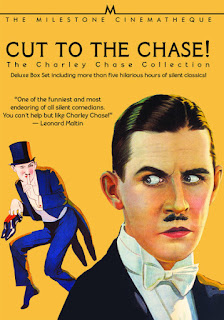It’s understandable if, after endless months of venomous, bitterly divisive politics, you aren’t particularly in the mood for a movie about a venomous, bitterly divisive period in American politics. But it would be a shame if political burnout kept audiences away from
Lincoln, Steven Spielberg’s amazing movie built around the performance of Daniel Day-Lewis as the 16th President.
Honest Abe has been irresistible to moviemakers for more than a century, depicted sometimes reverently, as in D.W. Griffith’s
Abraham Lincoln (1930),
Young Mr. Lincoln (1939) or
Abe Lincoln in Illinois (1940), and sometimes irreverently, as in
Bill & Ted’s Excellent Adventure (1989) or this year’s
Abraham Lincoln, Vampire Hunter. His achievements in office, his unassuming manner and his tragic end have, in the movies, generally resulted in one extreme or the other—either he’s a secular folk saint, or else he brings out the urge to spoof. There was TV miniseries called
Lincoln back in the ‘80s, based on Gore Vidal’s book and with Sam Waterston as Abe, that made some effort to delve into the man’s psychology, but as I recall it was pretty slow going.
Spielberg’s film takes its time, too, and it’s pictorially beautiful. The cinematographer, Janusz Kaminski, infuses his compositions with a muted radiance that still seems realistic and immediate—the whole movie feels like a spring thaw. Yet it’s no iconic hagiography, and the unhurried pace that Spielberg sets gives the story a rising hum of dramatic energy. It’s not a tour of wax-museum tableaux from the man’s life. Surprisingly, and to the movie’s great benefit, it’s a story of nuts-and-bolts politics: the seemingly insoluble legislative wrangle to pass the 13th Amendment to the Constitution, ending slavery in the United States.
The script, by Tony Kushner, is partly adapted from Doris Kearns Goodwin’s 2005 book
Team of Rivals: The Political Genius of Abraham Lincoln. The title suggests the difference in the new film’s approach. Political genius isn’t the first thing we associate with Lincoln. Yet the movie suggests that it was skill—at strategy, at marshalling favors and muzzling enemies, and at navigating the moral ambivalence of deep compromise—that, paradoxically, led him to accomplishments of moral grandeur.
Spielberg is at the top of his form here. I think film critics and buffs have, in a sense, underrated him for years. After his initial great success with
Jaws and
Close Encounters and
E.T., he made some really terrible movies in the late ‘80s and early ‘90s—pushy, cloying, evasive stuff like
Hook and
Always—and many viewers naturally assumed that he was just going to be a sentiment-peddler forever. Some of them, I think, didn’t notice that Spielberg’s films in the ‘90s and early 2000s, though often highly uneven in terms of script or casting, were stunningly directed.
Amistad and
Munich and
Saving Private Ryan and
War of the Worlds were all flawed, but they were the often mesmerizing work of a master filmmaker—indeed, of a master filmmaker who had rediscovered and deepened his art.
We see this again in
Lincoln, from the first images—of a horrifyingly bloody and brutal Civil War battle—to the first few lines of dialogue, as Lincoln converses with two black Union soldiers of very different temperament, and then with two awestruck white soldiers. There’s a weird and complex play of symmetry and conflicted agenda and formality and off-handedness, all presented with an effortlessness of revelation, that few other directors could have managed, or would even have thought to attempt.
What allows Spielberg to maintain this level of mastery through all that follows is the script. Kushner, who wrote the magnificent
Angels in America plays, is one of the few contemporary dramatists who is both capable and unafraid of high-flown language, and the 19th Century idiom allows him to cut loose in this regard without sounding overly stylized.
Yet for all of Spielberg’s and Kushner’s brilliance, and for all the splendors of Kaminski’s camera, what makes
Lincoln unique is Daniel Day-Lewis. Like the movie, his Lincoln will not suit all tastes, but for me, it’s one of the great performances in, maybe, the history of movies. It’s up there with Falconetti as Joan of Arc and Brando in
The Godfather, and nobody but Day-Lewis could have given it.
A number of people I’ve talked to have been put off by the voice he uses—a thin, soft, upper-register drawl instead of a stentorian baritone. This is thought to be historically accurate, I believe, but it also works in the context of the character as Spielberg, Kushner and Day-Lewis conceive him. The movie operates on the premise that Lincoln was a compulsive raconteur. Again and again throughout the film, he stops, chuckles to himself, and launches a maddeningly digressive anecdote, and everyone in the room, even his friends and allies, look miserable as they sit there and wait for the punchline. This recurring gag, and the voice, connect to the idea that as a speaker Lincoln preferred quiet eloquence to thundering oratory, and as a leader preferred self-deprecating persuasion to conquest.
Day-Lewis doesn’t give the only fine performance in the film. Sally Field strikes the right strained yet sympathetic note as Mary Todd Lincoln; Joseph Gordon-Levitt is moving as Robert Lincoln, and Tommy Lee Jones lets it rip as Radical Republican abolitionist Thaddeus Stevens. Less flashy than Jones but just as essential to the movie is David Strathairn as Seward, and then there’s Bruce McGill as Stanton, and Jared Harris as Grant, and Jackie Earle Haley as Alexander Stephens and Gloria Reuben as Elizabeth Keckley and Hal Holbrook as Preston Blair and James Spader, John Hawkes and Tim Blake Nelson as three comically shady political operatives, among many other creditable turns.
Lincoln is, ultimately—and perhaps to its commercial peril—a movie of remarkable restraint. Spielberg, Kushner and Day-Lewis eschew almost every opportunity for melodrama. Even the score, by John Williams, keeps its voice down. Yet the cumulative effect of this low-key movie is, at least for one viewer, overwhelming.





































